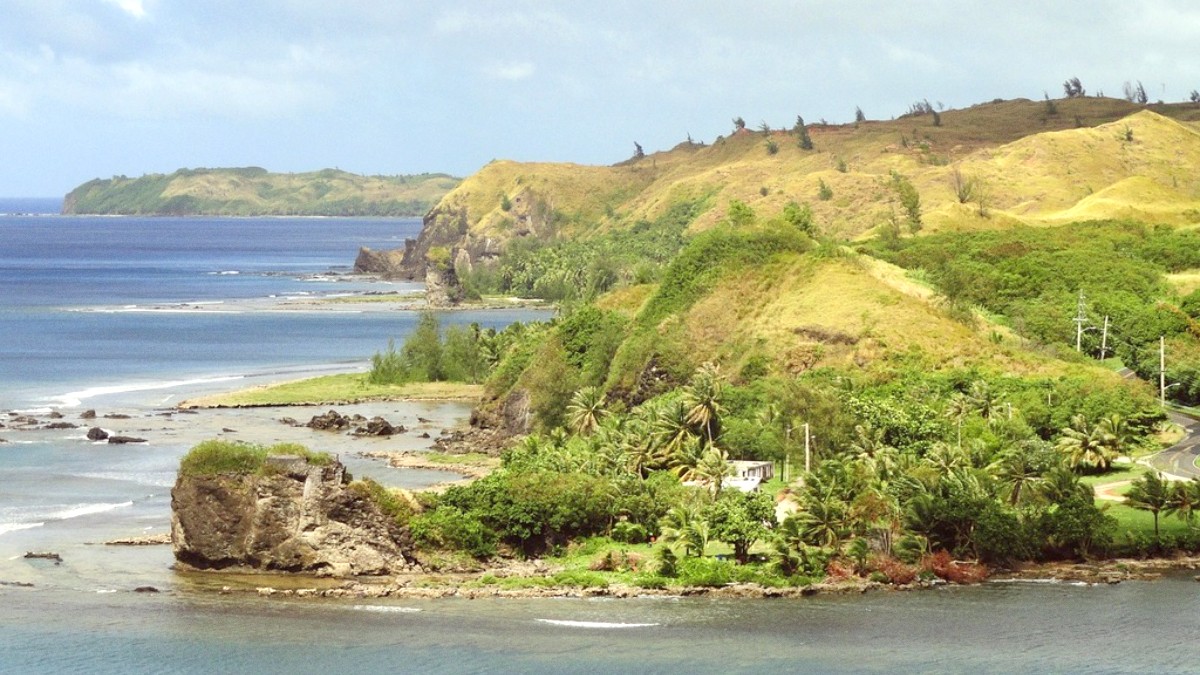
Find a place where ancient Chamorro traditions meet a lively contemporary culture. From the historical sites echoing tales of resilience to the stunning natural beauty that surrounds you, Guam offers a diverse experience. Get ready to discover a destination that feels both familiar and wonderfully unique, promising adventure, relaxation, and cultural insight. Plan your trip with confidence, knowing a welcoming, sun-drenched escape awaits.
Guam sits in the Western Pacific Ocean, a remote outpost and the largest island in the Mariana Islands archipelago. Its location makes it a noteworthy stop, approximately 1,500 miles south of Tokyo, Japan, and about 3,700 miles west-southwest of Honolulu, Hawaii. This strategic position has shaped much of its history and development. The island spans a total area of 210 square miles (544 sq km), making it a manageable size for exploration yet large enough to hold varied landscapes.
Guam's topography is diverse, offering different experiences depending on the region. The southern part of the island features volcanic mountains. These mountains, while not towering, create a rugged, verdant landscape with rolling hills, valleys, and numerous rivers. This area is home to many of Guam's waterfalls and hiking trails, appealing to those seeking outdoor adventures and natural beauty. Expect lush vegetation and scenic drives through these southern reaches.
Guam's history spans thousands of years, marked by the enduring presence of the Chamorro people and centuries of foreign influence. This long and complex past shapes the island's culture, language, and identity. They developed a sophisticated seafaring culture, building distinctive latte stones (pillar and cap structures) that served as foundations for their houses. These ancient structures are unique to the Mariana Islands and are powerful symbols of Chamorro heritage and architectural ingenuity. Their deep connection to the land and sea remains a powerful force on the island today. Visit sites like Latte Stone Park in Hagåtña to see these ancient pillars.
European contact began in 1521 when Portuguese explorer Ferdinand Magellan made the first European visit to Guam. Spain formally colonized Guam in the 17th century. For over 300 years, Guam remained under Spanish rule. The island’s fate shifted dramatically at the end of the 19th century. Spain ceded Guam to the United States in 1898 following the Spanish-American War. A profoundly challenging period arrived with World War II. Japan occupied Guam from December 1941 to July 1944. After World War II, Guam became an unincorporated territory of the United States. This status grants Guamanians US citizenship. The blending of ancient Chamorro traditions, Spanish colonial influences, and American contemporary culture creates a distinct and fascinating destination.
First European contact by Magellan, formal colonization by Spain. Introduction of Catholicism.
Guam ceded to the US; serves as a coaling station.
Japanese occupation and the Battle of Guam.
Guam becomes an US territory, maintaining strategic military significance.
The island continues to play a significant strategic role for the US military, hosting large naval and air force bases. This military presence shapes Guam's economy, demographics, and culture, adding another layer to its unique identity. Explore the historical sites with respect, recognizing the layers of time that define this Pacific island.
Visit the Guam Museum in Hagåtña to gain a appreciation of Chamorro history and how various influences shaped the island.
Numerous war memorials, battle sites, and museums around the island commemorate this pivotal time. The War in the Pacific National Historical Park preserves many of these sites.
The volcanic south invites you to hike and discover waterfalls. The northern limestone plateau gives way to beautiful beaches and cliff views. The extensive coral reefs promise world-class diving and snorkeling. This varied landscape ensures something for every type of traveler.
Guam, officially known as the Territory of Guam, operates as an unincorporated territory of the United States. This political status means Guam is subject to the US Constitution. For travelers, this provides a sense of familiarity, as US laws and regulations generally extend to the island.
Hagåtña serves as Guam's capital. This central city holds historical significance, housing government offices, the Guam Museum. While the capital, it is not the largest city in terms of population or commercial activity. Dededo ranks as the largest city by population, mainly residential with shopping centers and local businesses. The diverse population includes Chamorros, Filipinos, Koreans, Japanese, Chinese, and Caucasians, reflecting centuries of migration and cultural exchange.
English and Chamorro are the official languages. English is widely spoken and understood.
The United States Dollar (USD, $) is the official currency. ATMs are widely available.
Guam operates on Chamorro Standard Time (ChST), which is UTC+10.
Driving on Guam occurs on the right side of the road, matching the US mainland. This familiar driving rule makes renting a car and exploring the island straightforward. Speed limits are posted in miles per hour. The main roads are generally well-maintained.